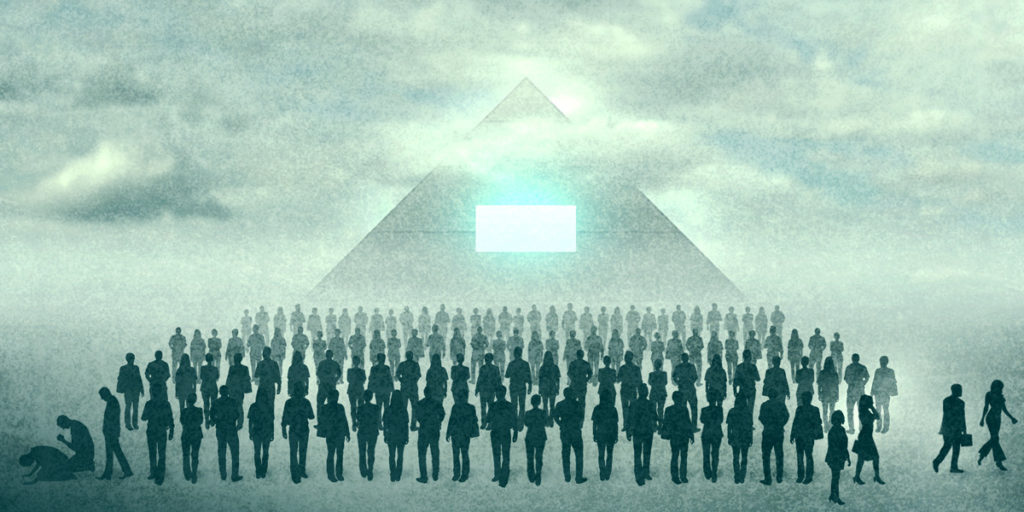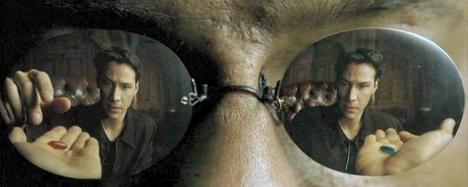Collective Illusions

In these times of caricature drawings of symbolic figures, and the following provoked parties, there should be a focus on what collective illusions are.
Illusions aren’t necessarily problematic as long as one is aware of being exposed to them. Watching a movie, reading a book, playing a game or experiencing art, are temporary and entertaining illusions. They can even be uplifting and inspiring for professional and creative expressions. Not all illusions are meant to be misleading. The problem is illusions that are being applied to the masses and developed over time, where the purpose is to get acceptance for anti-democratic actions.
Practically all societies have at some point been exposed to some kind of collective illusion – constructed by the few and enforced upon the many. A group, or a society, is then led to follow a constructed view or share a simplified concept of who is friend and who is foe. There are several historic and contemporary examples of this going on until a population is led into military warfare or a witchhunt with the collective illusion as a mantra.

The addiction to illusions and worshipping of them are distinctive human characteristics. (Photo: Juan Karita)
Such illusions typically contain dramatic stories, lofty promises and threatening punishments if one doesn’t play along. They reduce otherwise thinking individuals to instruction receivers who override their own rational objections. A mother or father who allows for genital mutilation of a child, enforced by a tradition’s framework, is illustrative of this. The same goes for instructions towards genocide or occupation of another ethnical group to the benefit of one’s own. Why doesn’t empathy or a rational objection render this impossible?
First of all, it is because collective illusions override critical thinking. If this happens from a young age the ability won’t prosper in the first place. One is simultaneously enforced to accept things as they are. Other individuals in the same situation will also create peer group pressure based on fear, which Michael Bond describes in the book “The Power of Others“. The fear is centered at what will happen if expected actions aren’t performed, with the threat: “either you are with us or you are against us”. Ergo, a collective illusion persists when it never is challenged.
The saying goes: “If everyone is thinking alike, then somebody isn’t thinking”.
One purpose here is perhaps to make the population receptive to established terms, so that reaction and fallout can be predicted. Terms like “good” and “evil” are examples of fundamental concepts that sit deeply with everyone. A set of instructions and commanded reactions are often fabricated as well. Instead of individuals being taught to resonate and act rationally based on available information, is has been historically appropriate to control information and actions in a top-down manner. Sigmund Freud elaborated on the background for the mechanisms in “The Future of an Illusion“.
In the events where a collective illusion has been attributed to an origin outside scientific reach, it has historically gotten almost unlimited power. This is because no one could prove or disprove what was stated. The same applies when information comes from a closed group. It is similar to being retold what happens (or has happened) behind the curtains of a scene. Perhaps something else happens – or even nothing. Hence, a lot of faith is given to the ones who retell or to the script that is being resited.

Ridiculing the icons of collective illusions isn’t necessarily a fruitful act if the purpose is to make proponents “wake up” or change their world view. It seems to result in recoil or strengthening of the bond, as with a reflex or a defense mechanism. It is like an enchanted person fights for the right to remain so. Cognitive dissonance is the discrepancy between one’s actions and what one starts to realize is right. For most people, this feels uncomfortable enough as to be subconsciously deflected.
One of the cornerstones for the framework of collective illusions is deflecting rational doubt or cognitive dissonance. The maintainers of the framework define such doubt as a common challenge that proponents have to defeat or let pass by. In some cases, the doubts are defined as the work of the enemy – which itself often is a construction within the same collective illusion.
On the other hand, it can be appropriate to point to the absurdity of a collective illusion, if it deviates significantly from the information one has about the environment and history (to the extent one has this). Then there is some chance the illusion breaks. One now also sees that it must have been in the interest of designers and maintainers of collective illusions to have certain control of the information that is accessible.
According to professor and critic Noam Chomsky, systems of power have been designed in such a way as to enrich and privilege the designers.
The most important is thus to motivate individuals to discover so-called “truth” on their own. In other words, a quest towards understanding what’s actually going on and how things work, among humans as in nature. Everyone is equipped with this ability from their childhood – through wondering, asking questions and not stop before the answers make sense. This also requires access to varied sources of information – and a chance to have a look at it. The majority of people in most societies are so engaged, either with work or with circus, that the occasion is seldom there.

The Matrix (1999): Neo gets the opportunity to wake up from a simulated world and see what’s happening behind the curtains.
Collective illusions are challenged when critical thinking occurs as well as attempts of breaking the illusion by a thorough analysis of it. This is also the reason why some national leaders have fought freedom of speech because it threatens the established power structure. One of the main functions of freedom of speech is to openly criticize problems in society as well as collective illusions. As such it contributes to increased awareness within the population and challenging the ruling establishment.
In order for freedom of speech and democracy to work as intended, individuals need access to plenty of information from varied sources. Education and science provide an important foundation, but that doesn’t guarantee to break free from dogmas or the ability to think critically. It is the addition of philosophy, access to observational data and free press that is the springboard towards new insights. One can hope for and work towards this happening globally. Only then one may see the end of groups provoking, being provoked, being led to terror or war; based on collective illusions.
